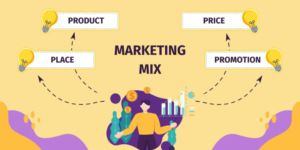In an increasingly complex and dynamic world, the need for effective leadership has never been greater. Leadership is not just about authority or management—it’s about influence, character, and connection. The acronym presented in “The Power of Leadership” outlines ten core traits: Listening, Empathetic, Approachable, Dedicated, Ethical, Respectful, Supportive, Humble, Inclusive, and Proactive. These traits form a holistic view of leadership rooted in emotional intelligence, ethical behaviour, and strategic foresight.
This article examines each trait through the lens of academic literature and real-world application, providing a comprehensive understanding of what constitutes powerful, responsible, and transformative leadership.
1.0 Listening
Active listening is a foundational skill in leadership. It facilitates better decision-making, improves relationships, and fosters psychological safety. According to Covey (2004), “Most people do not listen with the intent to understand; they listen with the intent to reply.” Great leaders reverse this tendency.
Research by Ladkin (2010) shows that leaders who actively listen build trust and loyalty in their teams. For instance, Satya Nadella, CEO of Microsoft, is known for reviving the company’s culture through listening tours that emphasised employee feedback (McGregor, 2017).
2.0 Empathetic
Empathy allows leaders to connect with others emotionally and socially. Goleman (1995) identifies empathy as a key component of emotional intelligence, which is strongly correlated with leadership effectiveness.
During the COVID-19 pandemic, leaders who demonstrated empathy—such as New Zealand’s Prime Minister Jacinda Ardern—were praised globally for putting people’s wellbeing at the forefront of decision-making (Wilson, 2020). Her empathetic communication style fostered national trust and cooperation.
3.0 Approachable
Being approachable encourages open communication, feedback, and collaborative problem-solving. It reduces organisational hierarchy and fear, creating a more transparent workplace culture.
Mintzberg (1973) notes that effective managers are not locked away in offices but are visible and available. An approachable leader creates an environment where employees feel comfortable sharing concerns, leading to quicker conflict resolution and stronger team cohesion.
4.0 Dedicated
Dedication signifies commitment, perseverance, and consistency. A dedicated leader inspires others through action and example.
According to Kouzes and Posner (2017), exemplary leaders “model the way” by aligning personal actions with shared values. Elon Musk, known for his intense work ethic, often works long hours alongside engineers—demonstrating his unwavering commitment to innovation at Tesla and SpaceX.
5.0 Ethical
Ethical leadership is the cornerstone of trust and integrity within organisations. Leaders set the moral tone, and their actions influence organisational culture.
Brown and Treviño (2006) define ethical leadership as “the demonstration of normatively appropriate conduct through personal actions and interpersonal relationships.” Scandals such as Enron and Volkswagen underscore what happens when ethical leadership is absent—resulting in legal consequences and erosion of public trust.
On the other hand, Paul Polman, former CEO of Unilever, integrated sustainability and ethics into the company’s core strategy, demonstrating how ethical leadership can also drive financial success (Polman & Winston, 2021).
6.0 Respectful
Respect fosters inclusivity and dignity at work. It is particularly important in diverse, multicultural teams where mutual understanding is vital.
According to the CIPD (2020), respectful leaders create psychologically safe environments where people feel valued. For example, Google’s Project Aristotle found that psychological safety—a form of mutual respect—was the most critical factor in high-performing teams (Rozovsky, 2015).
7.0 Supportive
A supportive leader ensures their team has the tools, guidance, and emotional encouragement needed to succeed. Support is a critical component of transformational and servant leadership.
Greenleaf’s (1977) servant leadership model emphasises serving others as a priority. Leaders like Indra Nooyi of PepsiCo were known for supporting employees not just professionally, but personally—writing letters to their families, showing that care enhances loyalty and performance (Bryant, 2010).
8.0 Humble
Humility may seem like a passive trait, but it is a powerful strength in leadership. Humble leaders are open to feedback, admit mistakes, and prioritise the collective over personal ego.
Jim Collins (2001), in Good to Great, identifies humility as a key trait of “Level 5 Leaders” who build lasting greatness. For example, Tim Cook, Apple’s CEO, is widely recognised for his humility and team orientation, in contrast to the charismatic but autocratic leadership style of Steve Jobs.
9.0 Inclusive
Inclusive leadership ensures that diverse voices are heard, valued, and integrated into decision-making processes. It drives innovation, engagement, and fairness.
A Deloitte (2016) report found that inclusive leaders enhance team performance by up to 17%, decision-making quality by 20%, and collaboration by 29%. Leaders such as Rosalind Brewer (Walgreens) and Sundar Pichai (Google) are examples of those championing diversity and inclusion as strategic imperatives.
10.0 Proactive
Proactivity in leadership involves anticipating challenges, initiating change, and being future-focused. It is closely tied to strategic thinking and adaptability.
Bass and Riggio (2006) argue that transformational leaders are proactive by nature—driving innovation and shaping rather than reacting to their environment. A strong example is Amazon’s Jeff Bezos, whose long-term planning and risk-taking have helped shape multiple industries.
Integrating the L.E.A.D.E.R.S.H.I.P. Model in Practice
Each trait in the L.E.A.D.E.R.S.H.I.P. framework is interconnected and mutually reinforcing. Together, they represent a holistic leadership style grounded in values, relationships, and vision.
To implement these traits effectively:
- Organisations must integrate them into leadership development programmes.
- Recruitment and promotion processes should prioritise emotional intelligence and ethical orientation.
- Leaders must engage in ongoing self-reflection, coaching, and feedback loops.
Leadership in the 21st century is not defined by command-and-control models but by empathy, ethics, and engagement. The L.E.A.D.E.R.S.H.I.P. model provides a clear, practical, and evidence-backed framework for what leadership should look like today. From listening to being proactive, these traits not only drive organisational performance but also foster human flourishing, resilience, and innovation.
Organisations that build and nurture these capabilities at every level will not only survive—but thrive—in a rapidly evolving world.
References
Bass, B. M., & Riggio, R. E. (2006). Transformational Leadership (2nd ed.). Mahwah, NJ: Lawrence Erlbaum Associates.
Brown, M. E., & Treviño, L. K. (2006). Ethical leadership: A review and future directions. The Leadership Quarterly, 17(6), pp. 595–616.
Bryant, A. (2010). Indra Nooyi of PepsiCo on nurturing talent. The New York Times. Available at: https://www.nytimes.com/2010/07/18/business/18corner.html [Accessed 10 Oct. 2025].
CIPD. (2020). Creating an Inclusive Workplace. Chartered Institute of Personnel and Development. Available at: https://www.cipd.co.uk/knowledge/fundamentals/emp-law/inclusion/factsheet.
Collins, J. (2001). Good to Great: Why Some Companies Make the Leap… and Others Don’t. London: HarperBusiness.
Covey, S. R. (2004). The 7 Habits of Highly Effective People. New York: Free Press.
Deloitte. (2016). Waiter, Is That Inclusion in My Soup?. Deloitte University Press.
Goleman, D. (1995). Emotional Intelligence: Why It Can Matter More Than IQ. New York: Bantam Books.
Greenleaf, R. K. (1977). Servant Leadership: A Journey into the Nature of Legitimate Power and Greatness. Mahwah, NJ: Paulist Press.
Kouzes, J. M., & Posner, B. Z. (2017). The Leadership Challenge (6th ed.). San Francisco: Jossey-Bass.
Ladkin, D. (2010). Rethinking Leadership: A New Look at Old Leadership Questions. Cheltenham: Edward Elgar Publishing.
McGregor, J. (2017). How Satya Nadella turned Microsoft around. The Washington Post. Available at: https://www.washingtonpost.com [Accessed 10 Oct. 2025].
Mintzberg, H. (1973). The Nature of Managerial Work. New York: Harper & Row.
Polman, P., & Winston, A. (2021). Net Positive: How Courageous Companies Thrive by Giving More Than They Take. Boston: Harvard Business Review Press.
Rozovsky, J. (2015). The five keys to a successful Google team. re:Work. Available at: https://rework.withgoogle.com/blog/five-keys-to-a-successful-google-team/
Wilson, S. (2020). Jacinda Ardern and the New Leadership Paradigm. The Conversation. Available at: https://theconversation.com [Accessed 10 Oct. 2025].









